- Author: Kathy Keatley Garvey

EicOsis Human Health LLC, the Davis-based pharmaceutical company developing a non-narcotic drug to relieve chronic pain and inflammation, today announced the next step in its ongoing human clinical trials: the initiation of Phase 1b to test the safety of its drug candidate, EC5026.
The ongoing double-blind, placebo-controlled Phase 1b study is designed to investigate the safety and pharmacokinetics of daily doses of EC5026 over seven days.
EC5026, an inhibitor of the soluble hydrolase enzyme (sEH), was discovered and patented at EicOsis based on previous patents and research papers from the laboratory of UC Davis distinguished professor Bruce Hammock during his half-century of research.
“EC5026 plays a crucial role in regulating the metabolism of signaling lipids and responding to inflammation and other stress responses caused by trauma or disease,” said Hammock, who holds a joint appointment with the Department of Entomology and Nematology and the UC Davis Comprehensive Cancer Center. “We found sEH to be a target for treating pain, inflammation, cancer and other diseases.”
By inhibiting sEH, EC5026 alleviates pain by preventing the breakdown of natural analgesic and anti-inflammatory fatty acids. Preclinical studies demonstrate no sedation or other adverse behavioral effects and no signs of addiction.
“Many regulatory molecules are controlled as much by degradation as biosynthesis,” Hammock explained. "The epoxy fatty acids rapidly degraded by the sEH control blood pressure, fibrosis,immunity, tissue growth, depression, pain, and inflammation, to name a few processes.”

“The initial results from Cohort 1 appear to replicate the very favorable safety profile we observed in our previous two Phase 1a clinical studies where there were no adverse behavioral, cardiovascular, or neurological effects over five ascending single-dose levels,” said Dr. William Schmidt, EicOsis vice president of clinical development. “The maximum dose level was 5 to 10-fold higher than the anticipated analgesic dose in humans.”
“If Cohort 2 dosing also proceeds without clinically significant adverse effects and a favorable pharmacokinetic profile for once-a-day dosing,” Schmidt continued, “this provides encouragement for initiating our first analgesic efficacy study in the second quarter of 2024.”
EicOsis plans to initiate its first pain patient study in April 2024 “to evaluate safety and analgesic effects in patients with a spinal cord injury who have failed to achieve satisfactory pain relief with existing non-opioid chronic pain medications,” said Cindy McReynolds, EicOsis chief executive officer and former director of research.
“Initiation of the Phase 1b program represents a significant milestone for EicOsis Human Health and demonstrates the success and dedication of our team to make this happen,” said McReynolds, who holds a doctorate in pharmacology and toxicology from UC Davis. “Demonstrating safety in Phase 1b studies will allow us to evaluate efficacy in patients and bring forward safe and effective treatments for several serious diseases. For example, the sEH inhibitors are being considered for use for treatment of cancer in the UC Davis Comprehensive Cancer Center, and neurological disease through the UC Davis Health's designated Parkinson's Foundation Center of Excellence.”
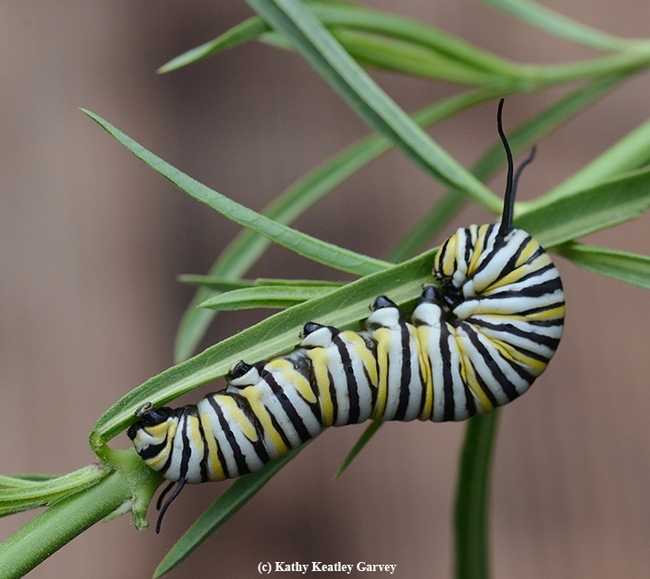
“As a potential anti-inflammatory fatty acid, EC5026 holds promise in addressing neuroinflammation, a key factor in the manifestation and even progression of Parkinson's,” said Zhang, who holds both an M.D. and a PhD. “Ensuring its safety profile in healthy individuals is fundamental for establishing a foundation for further clinical trials. this investigation provides valuable insights into design and overall safety parameters, paving the way for the next stages in advancing this innovative therapeutic approach for Parkinson's disease."
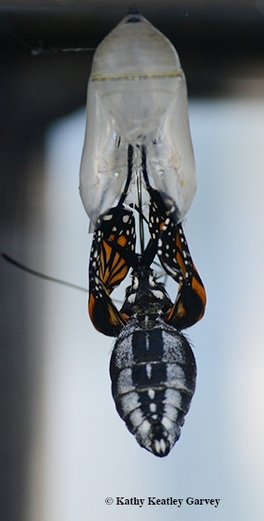
The FDA granted Fast Track status to EC5026 in April 2020 to support the unmet medical need for safe and effective non-opioid analgesics. EicOsis clinical scientist Irene Cortés Puch, who authored the successful application, commented: “Both our commitment and focus at EicOsis Human Health are guided by a genuine concern for the well-being of patients and recognizing the importance of identifying effective pain management alternatives. Therefore, the initiation of this Phase 1b clinical trial is an exciting step in advancing our mission to provide safer and effective treatments.”
Hammock traces his research on chronic pain to his earlier work on how a caterpillar becomes a butterfly; a key enzyme, epoxide hydrolase, degrades a caterpillar's juvenile hormone, resulting in metamorphosis.
A member of the UC Davis faculty since 1980, Hammock founded ;EicOsis in 2011 and served as its chief executive officer until February 2023 when he transitioned to scientific officer and chairman of the board of directors. Highly honored by his peers, he is a member of the National Academy of Inventors and the National Academy of Sciences and received the 2020 Lifetime Achievement Award in Innovation from UC Davis Chancellor Gary May. Hammock has authored or co-authored more than 1400 peer-reviewed publications and holds more than 95 patents in agriculture, environmental science and medicinal chemistry.
EicOsis (pronounced eye-co-sis), derives its name from eicosanoids, “the major backbone of chemical mediators in the arachidonate cascade,” McReynolds said. “It symbolizes the epoxide group in chemistry, which is key to the anti-inflammatory chemical mediators and where the biochemical target called soluble epoxide hydrolase works.”
Approximately 50 million Americans (20 percent of the population) suffer from chronic pain, according to the Centers for Disease Control and Prevention. The annual economic toll is $560 billion, encompassing direct medical expenses, lost productivity, and disability claims.
More information on the Phase 1b multiple-ascending dose clinical study is available at https://clinicaltrials.gov/study/NCT06089837.
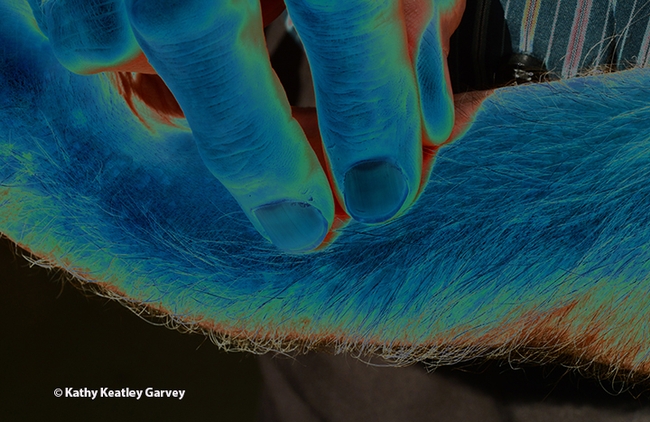
- Author: Kathy Keatley Garvey
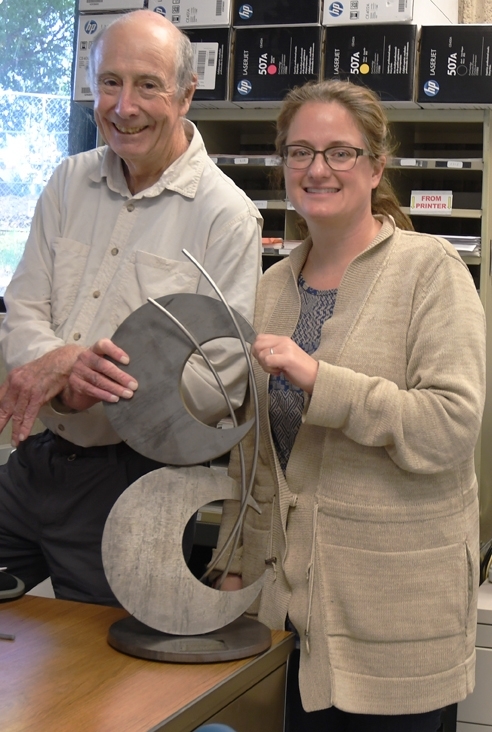
And now, the company he founded, EicOsis LLC, to develop a non-opiate drug to relieve inflammatory pain in companion animals and target chronic neuropathic pain in humans and horses, can add “Sacramento Region Innovator of the Year” to its list of accomplishments.
EicOsis won the award in the medical health/biopharmaceutical category of the annual Sacramento Region Innovation Awards Program. The program “recognizes the area's vibrant innovation community—from emerging to established companies—and their breakthrough creations,” according to sponsors Stoel Rives LLP, Moss Adams LLP and the Sacramento Business Journal.
“This project is an illustration of how fundamental science leads to real world applications, in this case addressing severe pain of humans and companion animals,” said Hammock, chief executive officer of EicOsis and a UC Davis faculty member who holds a joint appointment with the Department of Entomology and Nematology and the UC Davis Comprehensive Cancer Center. “Our success in translation has been due largely to support from a number of institutes of the National Institutes of Health and a small team of hard-working scientists.”
The ceremony, honoring the winners of the eight categories, took place Nov. 7 in the Crest Theatre, Sacramento. Judges scored the finalists on novelty, market need, economic or social impact and disruption. (See more information on YouTube (the EicOsis award presentation starts at 1:05.)
“It was an honor to be awarded the Sacramento Region Innovator of the Year in Medical Health and BioPharma,” said Cindy McReynolds, senior program manager of EicOsis and a UC Davis doctoral candidate studying pharmacology and toxicology. “The companies represented were inspiring, and it is great to be a part of the innovation going on in the Sacramento region.”
“Chronic pain is an enormous emotional and economic burden for more than 100 million people in the United States alone,” said Hammock, who co-founded EicOsis in December 2011 to alleviate pain in humans and companion animals. “The extreme and poorly treated pain that I observed as a medical officer working in a burn clinic in the Army, is a major driver for me to translate my research to help patients with severe pain.”
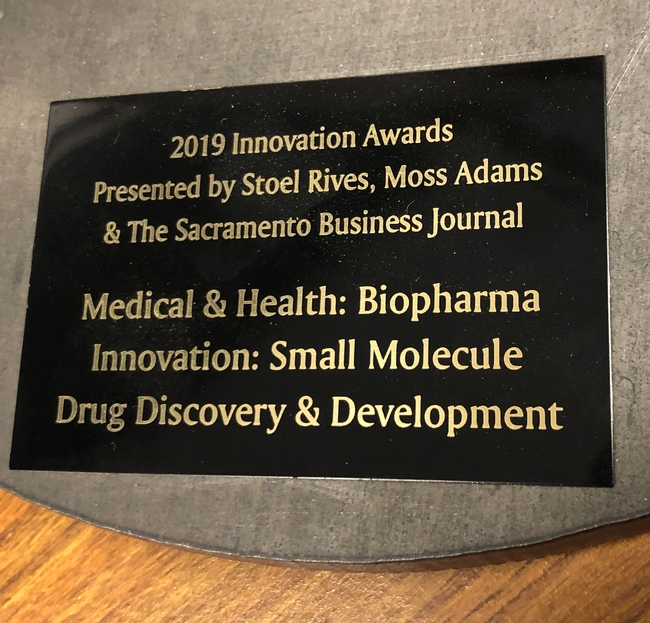
Phase 1 human clinical trials to test the drug candidate, EC5026, a first-in-class, small molecule that potently inhibitssEH, will begin Dec. 10 in Texas. The title: "A Single-Center, Double-Blind, Placebo-Controlled, Phase 1a Single Ascending Dose Study to Investigate the Safety, Tolerability, and Pharmacokinetics of Sequential Dose Regiments of Oral EC5026 in Healthy Male and Female Subjects." Eight will participate; six with the drug candidate and two with the placebo. The technology was discovered in the Hammock lab and UC Davis has licensed patents exclusively to EicOsis.
“EC5026 is a key regulatory enzyme involved in the metabolism of membrane fatty acids,” Hammock said. "It's a novel, non-opioid and oral therapy for neuropathic and inflammatory pain. Inhibition of sEH treats pain by stabilizing natural analgesic and anti-inflammatory mediators."
The project is unique in that “there have been very few truly new types of analgesic compounds that have reached the market in the past 50 years,” Hammock said.
“The sEH enzyme is involved in regulating the activity of powerful anti-inflammatory fatty acids called EETs that are present in all cells in humans and animals,” the scientists explained in their awards application. “EETs are anti-inflammatory, analgesic, anti-hypertensive, but they are short lived molecules that are normally eliminated within seconds. By inhibiting sEH, EET levels can be increased by 4x or more and maintained at high anti-inflammatory and analgesic levels for 24 hours or longer.”
“The sEH inhibitors are very potent molecules that are designed for once daily oral dosing. They can also be administered intravenously for acute pain (e.g. equine laminitis),” they wrote. “Preclinical safety studies show that sEH inhibitors are very safe with no visible signs of toxicity at doses more than 100x higher than the therapeutic dose levels. Unlike conventional analgesics, they do not produce sedation or cognitive dysfunction and they have been shown to have no addiction liability, no adverse cardiovascular effects, and no adverse effects on the gastrointestinal tract. They can be safely co-administered with existing analgesic medications.”
Approximately 50 million Americans (20 percent of the population) suffer from chronic pain, according to the Center for Disease Control and Prevention. The annual economic toll is $560 billion, encompassing direct medical expenses, lost productivity, and disability claims. Pain research is now one of the top priorities of the National Institutes of Health (NIH).
EicOsis advancement of EC5026 into clinical trials has been funded as part of the Blueprint Neurotherapeutics Network (BPN) of the NIH Blueprint for Neuroscience Research. The BPN is a collaboration of NIH Institutes and Centers that supports innovative research on the nervous system with the goal of developing new neurotherapeutic drugs.
EicOsis (pronounced eye-cosis), derives its name from eicosanoid, “the major backbone of chemical mediators in the arachidonate cascade,” said McReynolds. “It symbolizes the epoxide group in chemistry, which is key to the anti-inflammatory chemical mediators and where the biochemical target called soluble epoxide hydrolase works.”
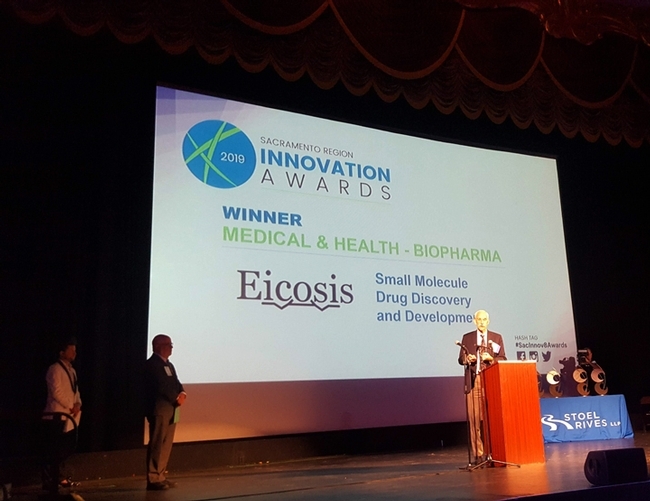
- Author: Kathy Keatley Garvey
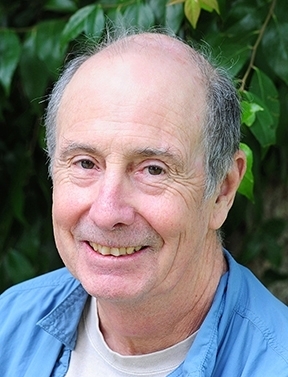
Bruce Hammock, UC Davis distinguished professor of entomology who holds a joint appointment with the UC Davis Comprehensive Cancer Center, is fond of saying that in his many talks.
"Science is full of surprises."
His research clearly shows that basic science can lead to surprising findings.
A recently published news story, "From Caterpillars to Kidney Disease: Surprise Discoveries in Basic Science," on the Medical College of Wisconsin website chronicles how Hammock's basic research on caterpillars--how caterpillars become butterflies--led to key discoveries about chronic pain, including diabetic pain.
As an aside, Hammock suggested to communication specialist Karri Stock that the story could include a photo of a caterpillar and a butterfly, and did I have one?
I did, thanks to the Gulf Fritillary (Agraulis vanillae) population explosion on our passionflower vine (Passiflora). A caterpillar was doing what caterpillars do. Then two butterflies came along and started doing what males and females do. The three-in-one photo illustrates the article, along with a photo of Hammock and collaborator John Imig, professor of pharmacology and toxicology at the Medical College of Wisconsin, Milwaukee.
The gist of the news story is that Imig received a $2.3 million grant from the National Institute of Diabetes and Digestive and Kidney Diseases "to investigate the development of a drug to treat type 2 diabetes and metabolic syndrome."
"But what we didn't tell you is that this translational grant is all thanks to some caterpillars in California and decades of research," Stock wrote. "It's a tale of pure curiosity with a great lesson for budding scientists and the public alike: You can't always predict where basic science discoveries will lead."
She related how, more than 40 years ago, a young entomologist in California named Bruce Hammock found a key enzyme (epoxide hydrolase or EH) in the metamorphosis of caterpillars into butterflies. "The enzyme degrades a caterpillar's juvenile hormone, allowing it to move from the larval stage into an adult insect. Early in his career, Dr. Hammock found that if he exploited this EH and prevented larvae from becoming adults, he had on his hands an effective genetically engineered insecticide."
Then came the basic science and fundamental questions that Hammock asked. "Does the enzyme occur in plants? Does it occur in mammals?"
"And it turns out that it does, particularly as soluble epoxide hydrolase (sEH) in mammals, including mice and humans, and its distribution suggested it was involved in regulatory biology," Stock wrote. She went on to detail the collaboration of Hammock and Imig. Read the entire MCW story here.
Hammock's work has drawn national and international attention. Groundbreaking neuropathic pain research emanating from the Hammock lab made Discover magazine's Top 100 Science Stories of 2015 ranking among the Top 15 in the medicine/genetics category.
The UC Davis research was singled out for its “Endoplasmic Reticulum Stress in the Peripheral Nervous System is a Significant Driver of Neuropathic Pain,” published in July 2015 in the Proceedings of the National Academy of Sciences. (See UC Davis news story).
Highly honored by his peers, Hammock is a fellow of the National Academy of Inventors, which honors academic invention and encourages translations of inventions to benefit society. He is a member of the U.S. National Academy of Sciences, a fellow of the Entomological Society of America, and the recipient of the Bernard B. Brodie Award in Drug Metabolism, sponsored by the America Society for Pharmacology and Experimental Therapeutics. He directs the campuswide Superfund Research Program, National Institutes of Health Biotechnology Training Program, and the National Institute of Environmental Health Sciences (NIEHS) Combined Analytical Laboratory.
A native of Little Rock, Ark., Bruce earned a bachelor's degree in entomology from Louisiana State University in 1969 and his doctorate in entomology/toxicology from UC Berkeley in 1973, and then accepted a Rockefeller Postdoctoral Fellowship at Northwestern University. Hammock served as a member of the UC Riverside faculty for six years before joining UC Davis in 1980. In addition to maintaining a vigorous research program, Hammock teaches, mentors students, works with visiting scholars and enjoys rock climbing and kayaking.
And if you get a chance to hear him speak about his research, he's likely to say: "Science is full of surprises."
Because it is.



